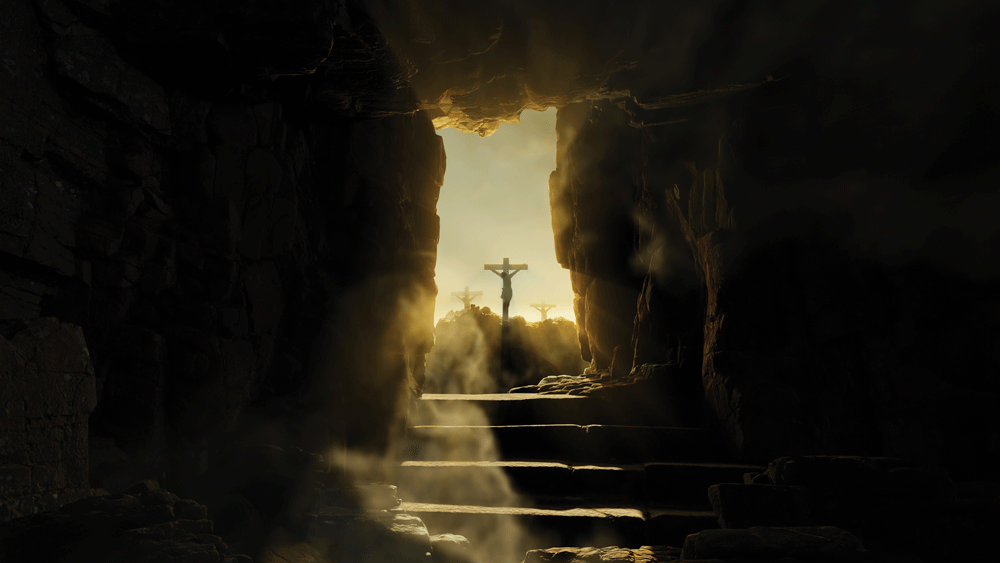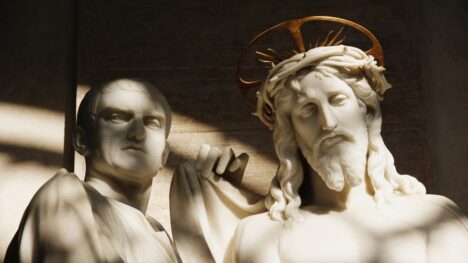
Ultra-rich Silicon Valley tech magnate Bryan Johnson has been regularly having transfusions of his own son’s blood plasma in an effort to live longer. The treatments are expensive and are essentially still being trialled.
A BBC Radio 4 podcast called The Immortals details how a group of people, mostly billionaires, are striving to unlock the secrets of living forever. Mr Johnson himself is reportedly paying $US2 million a year to a research team investigating longevity.
According to The Guardian’s review of the podcast, one of the world’s richest men, Amazon owner Jeff Bezos, is investing in a cellular rejuvenation program, while others are working on merging AI and machines—a sort of “next phase” of humanity.
The more research I do into this, the more it feels like science-fiction. One leading idea that has been prominent in science-fiction but is heading closer to being real life is the idea of living on digitally.
In the film Transcendence, a rich, eccentric character played by Johnny Depp, who is working on developing an artificial intelligence has his consciousness uploaded to escape death. This fantastical idea is seemingly getting closer to reality.

man’s best friends
We see this resistance to death in the development of new drugs to fight ageing in dogs. According to a New York Times report, the Food and Drug Administration (FDA) has cleared the first step for a company called Loyal to produce drugs that promise to increase a dog’s lifespan. We are uncomfortable with death and the death of “man’s best friend” happens more regularly than we’d like. In the hope of staving off the inevitable, humans are attempting to increase the lifespan of dogs. But there is an agenda in doing so.
If the FDA will approve such a thing for animals, the hope is it will set a precedent for admitting that drugs can actually have an impact on human lifespans, making future approval slightly easier. While nothing may be available for a couple of years yet (2026 has been flagged as the earliest), it is a development that many are looking towards as a step in the journey to lengthen lifespans for humans.
raging against death
Humans have long searched for immortality. Tales of the fountain of youth appear as far back as the writings of Herodotus (fifth century BC) and are found in many different cultures. Through the Middle Ages and beyond, the Holy Grail was one relic said to bestow healing and life on those who find and drink from it. The Pharaohs and rulers of ancient Egypt also sought life eternal, seeing death as a portal for a life that could be prepared for using the resources of this earthly life. They spent enormous resources building tombs and pyramids, stocking them for use in the afterlife. In a way, mummification and embalming are almost like the sci-fi technique of having your body cryogenically frozen until you can be brought back to life.
Humans everywhere are ruled by the fear of death. For most of us, death is a few steps further away than it was for our grandparents. We’re not living hand-to-mouth and yet, we are still motivated by death. Work hard to survive. Get ahead of other people. Spend money on self-care and health fads and snake oil in an effort to find an extra few years of life.
The one-percenters’ quest to stave off death using all the resources at their disposal is just the most recent iteration in this ongoing battle between ordered life and chaotic oblivion. Our striving against this slide back into the abyss is understood and explored by the biblical writers, who provide a powerful counter-narrative.

the Easter story
The Bible details the story celebrated by Christians at Easter time. It is found within four books that are collectively known as the Gospels: Matthew, Mark, Luke and John. Each writer adds different details and points of emphasis, but they all essentially tell the same story.
Jesus had been teaching, healing the sick and travelling around Judea and Galilee, followed by many, including His 12 disciples. After three years of this, Jesus had everyone’s attention. The religious elites of society felt threatened by His audacious teachings. They thought that if He continued to gain popular support, He would draw the ire of the occupying Roman Empire and cause severe suffering to their people. They also feared what little power they had being taken away.
Jesus knew His days were numbered and tried to prepare His followers, including celebrating a Passover meal where He instituted the Christian practice of breaking unleavened bread and sharing wine as symbols of His body and blood. As you might remember, later in the evening, Jesus was then betrayed by one of His disciples, who led soldiers to arrest Him by cover of night. Any resistance that might have been put up by His followers was discouraged by Jesus, which led to them fleeing and hiding. A few mock trials followed as Jesus was shuttled between the religious and civil leaders and ultimately sentenced to death.
The cross was the most brutal form of execution the Romans could devise. Death was humiliating, agonising and prolonged. Condemned men and women were stripped naked and nailed to these coarse wooden crosses in an agonising position. To breathe properly they had to push up on their feet, which were nailed together at the bottom, otherwise, their weight would be taken on their shoulders. After hours of hanging, slowly they would suffocate. Often, they were whipped and beaten before being hung. Jesus died in this way, after only hanging there for a few hours. He was placed in a borrowed tomb and left there over the Sabbath hours.

The triumph of the Easter story is in what happened on Easter Sunday—the resurrection. The stone was rolled away, soldiers were flung aside and when Jesus’ disciples came to check the tomb, it was empty. The Bible records many people who claimed to see Jesus alive and mysteriously, authorities were never able to produce a body.
Now, there’s a good chance you may be reading this cynically. Perhaps you doubt whether the resurrection truly happened. There have been a multitude of books written about the evidence recorded—all of which is beyond the scope of this article. However, one thing that speaks volumes is that those who followed Jesus in life—those who had seen Him preach, teach and heal the sick—were transformed into disciples who followed Him in death. These men and women gave their lives in horrific circumstances (beheading, boiling in oil, being crucified upside-down, mauled by wild animals). Something significant must have happened for them to turn their lives around so completely.
They were convinced that death’s power had been broken and that Jesus had gone through the “belly of the beast” and come out the other side, clearing the way for others to experience that life. But death cannot be defeated by death, right? Counterintuitively, Jesus defeated death by giving Himself up willingly to it. Quoting Hebrew prophets, the apostle Paul proclaims,
“Death is swallowed up in victory.
O death, where is your victory?
O death, where is your sting?”
(1 Corinthians 15:55).
The story of Easter challenges our notion of death and has the power to turn the fear and control death exerts on our lives on its head. In Easter, we discover that the way to gain victory over death is by refusing to play by death’s rules and use the weapons it has fashioned. The Roman Empire’s military-industrial complex weaponised death in order to control foreign populations. The Jewish religious systems could not directly use death as the Romans had monopolised it but they did exploit it in another form—social and reputational death. Through this weapon they controlled the masses and anyone who transgressed their laws risked being shunned from Jewish society.
On their excellent podcast, the Bible Project team track this theme throughout the Bible in their “Chaos Dragon” series. They highlight how the whole arc of the Bible places God in a conflict with the primordial forces of death and chaos. They still hurt, they still destroy, but Jesus’ victory provides the roadmap for all of us to one day go through death without letting it corrupt us into becoming agents of death ourselves.
Jesus stared death in the face and without flinching, allowed Himself to be swallowed up by it. On the very first pages of the Bible, it was predicted that a man would come who would crush the head of this snake and yet be bitten on the heel, suffering the consequence of death’s existence but ultimately destroying it (Genesis 3:15).

Even if you don’t believe in the resurrection, this story can both become a source of hope and a blueprint to live your life free from the fear of death. Rest comes when we cease running from death, even if just for a moment.
According to the arc of the Bible story, death is unnatural but Jesus has paved the way for us to overcome—without spending billions of dollars on strange science. Paul explains and that, because of what Jesus did, we all have the chance to be given new life.
“He is the first of a great harvest of all who have died. . . . But there is an order to this resurrection: Christ was raised as the first of the harvest; then all who belong to Christ will be raised when he comes back” (1 Corinthians 15:20–22).
This Easter, I invite you, whether you are religious or not, to spend some time meditating on how to live life victoriously and full of hope in a way that takes away some of the stress, anxiety, anger and conflict manifested by humanity’s fear of death. Spend some time thinking of the humility of Jesus, who knowingly walked into the shadow of death, so we could experience life.
If you’d like to connect with a local church, or ask any further questions, email info@signsmag.com or visit signsmag.com/help









